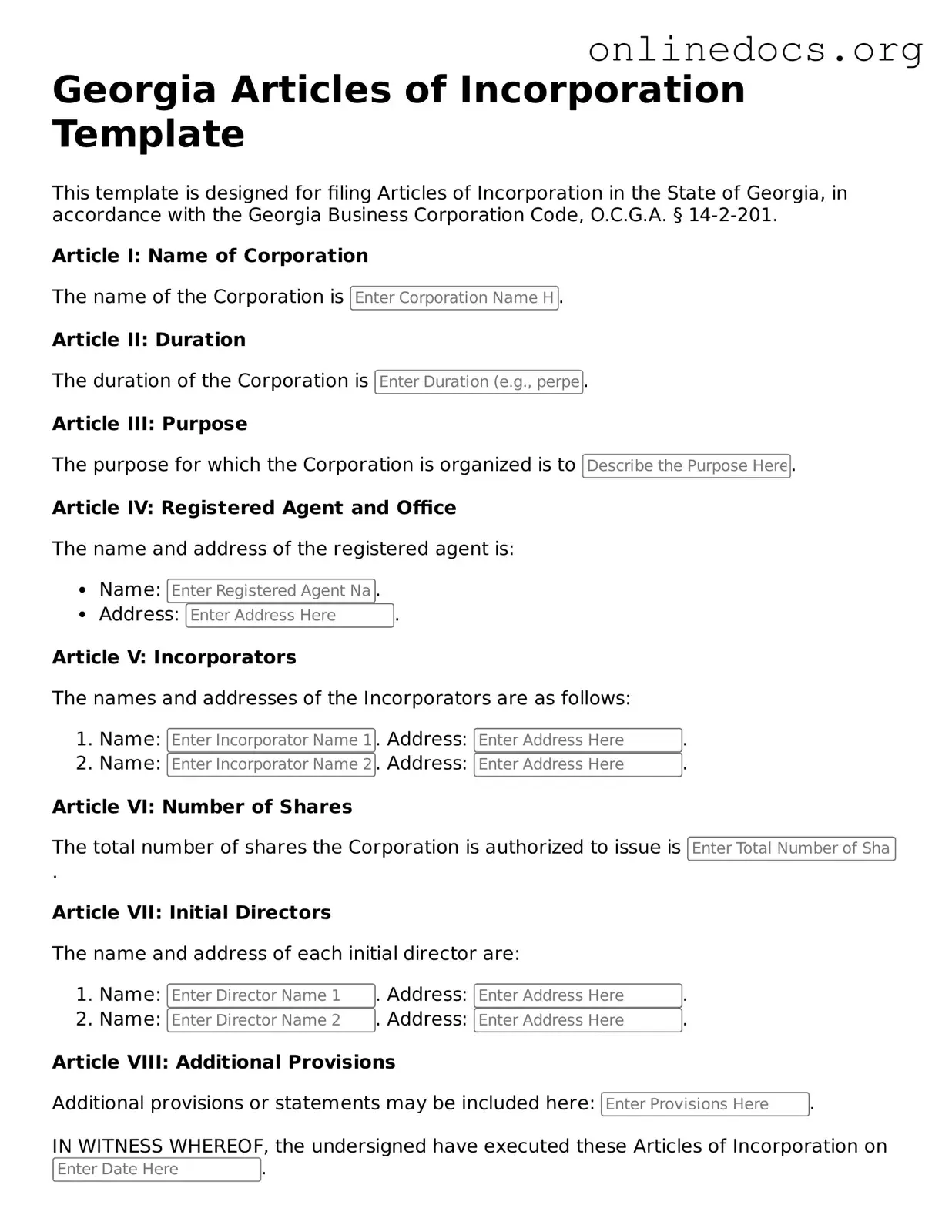The Georgia Articles of Incorporation form shares similarities with the Certificate of Incorporation, commonly used in many states. Both documents serve as foundational legal papers that establish a corporation's existence. They outline essential details such as the corporation's name, purpose, and the number of shares it is authorized to issue. While the terminology may vary slightly from state to state, the underlying purpose remains the same: to formally recognize a corporation as a legal entity separate from its owners.
Another document akin to the Articles of Incorporation is the Bylaws of a corporation. While the Articles provide a broad overview of the corporation's structure, the Bylaws delve into the internal rules and regulations governing the corporation's operations. These rules cover everything from the responsibilities of officers and directors to the procedures for holding meetings. Together, these documents create a comprehensive framework for both the formation and governance of the corporation.
The Operating Agreement is similar to the Articles of Incorporation but is specific to limited liability companies (LLCs). Like the Articles, it establishes the entity's existence and outlines its purpose. However, the Operating Agreement goes further by detailing the management structure, member roles, and distribution of profits. This document is crucial for LLCs as it clarifies how the business will be run and helps prevent disputes among members.
The Partnership Agreement also bears resemblance to the Articles of Incorporation, particularly for business partnerships. This document outlines the terms of the partnership, including each partner's contributions, responsibilities, and profit-sharing arrangements. While the Articles focus on formal incorporation, the Partnership Agreement emphasizes the collaborative nature of the business relationship among partners.
When engaging in the sale of personal property or vehicles, parties may find it crucial to utilize a Bill of Sale, which serves as a key document in recording the ownership transfer. This form not only provides clarity regarding the transaction but also helps protect the rights of both the buyer and the seller. For those seeking a template or more information regarding this document, resources like legalformspdf.com can be invaluable.
In addition, the Statement of Information is another document that parallels the Articles of Incorporation. This form is often required shortly after a corporation is established and serves to provide updated information about the corporation's address, officers, and directors. While the Articles create the corporation, the Statement of Information ensures that the state has current and accurate details about the entity’s operations and leadership.
Lastly, the Certificate of Good Standing is similar in that it confirms the corporation's legal existence and compliance with state regulations. While it is not a founding document like the Articles of Incorporation, it serves as proof that the corporation has met all necessary requirements to operate legally. This certificate is often needed for various business transactions, such as securing loans or entering contracts, highlighting its importance in the ongoing life of the corporation.
